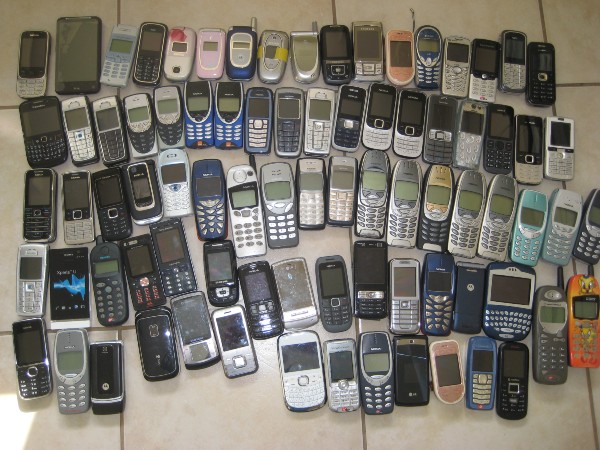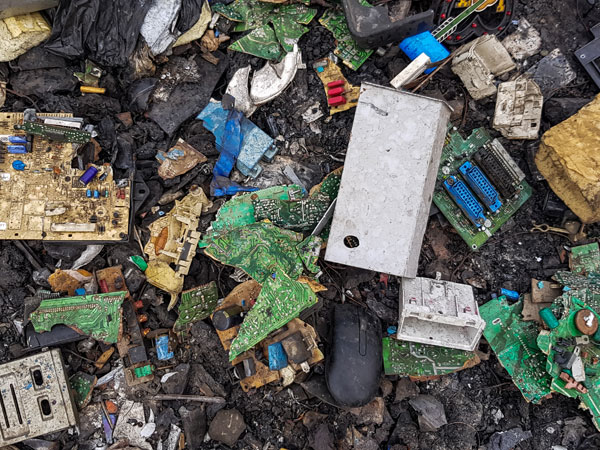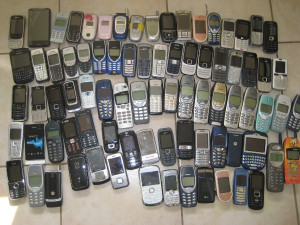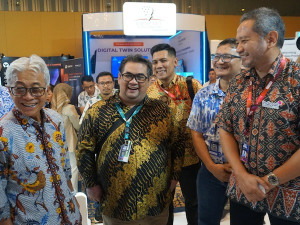In the first instalment of this series, we explored the scale of the issue of e-waste and some of the steps being taken to reduce it. As attitudes towards sustainability shift, policymakers take note – whether at company or government level – and in this article we’ll explore the factors pushing the industry towards sustainability.
Clare Hobby of sustainability experts TCO Development notes that consumers are fickle when it comes to priorities. “They talk the talk, saying they’d love a more sustainable product that’s made responsibly, but when it comes to the purchase, they still go for what’s shiny and new”, says Hobby. When talking about sustainability in this space, there’s much more power and leverage when it comes to the government, but volume-driving corporations also have a lot of influence – they have regulation to adhere to and investors on their tail.
Jan Stryjak, an Associate Director at Counterpoint Research, agrees that for companies, it may well be a matter of policy. Some OEMs such as Apple simply want to implement a more sustainable supply chain, and this pushes their main rivals such as Samsung to follow suit. There are also smaller firms like Fairphone offering devices composed almost entirely of recycled materials; however, Stryjak notes that it’s comparatively simpler for smaller firms to ensure their supply chain is sustainable, compared to giant corporations such as Samsung – but all companies are under increasing pressure to do so.
“I think that's probably the only way that we're going to get to the level that we need to get to - if we have this regulation”, says Stryjak, pointing to EU regulations around the right to repair devices and the standardisation of the USB-C charging cable. “The consumer sentiment isn’t quite there yet, in terms of people making conscious decisions to buy a more sustainable phone.”
Hobby says that buyer perceptions over responsibility need to change, noting that governments and corporations alike will send used devices off for recycling on the assumption that it’s responsible. While she underlines that it’s not terrible, there are far better options. Recyclers can be overwhelmed with the amount of products they receive, which can result in them sending devices off to new destinations without being able to recycle them properly. The recycling process itself produces emissions, which is why device lifespan remains such a key factor – recycling is not necessarily the goal.
Many companies in developed markets have the idea that they can use products, then refurbish them and ship them to companies in emerging markets, but there’s huge potential for longer use at the first use phase. Devices aren’t being refurbished or remanufactured enough to keep them in the longer life cycle. “The intentions behind exporting used products to emerging markets are good, as there is a huge need for technology in these regions, but in terms of e-waste it’s offloading the decision to a market that doesn’t have the policy or infrastructure in place to deal with it”, says Hobby.
In terms of sustainable purchasing, Asia notably lags behind Europe, Australia and the US, says Hobby. “American companies have seen this trend coming, but they’ve also been driven by the forward movement of countries in the EU which have been asking for this for quite a while. Some of the Asian brands are more ‘value’ – they see sustainability as more of a compliance issue; they’ll do it if they’re forced to by regulations or very large buyers. “
This is particularly evident in China. Glen Cardoza, a Senior Research Analyst at Counterpoint, notes that sustainability is a recent addition to the agenda for many Chinese OEMs. “Just about a year or two ago, they started their own sustainability reports”, he notes. “That’s how the Chinese brands are trailing Apple and Samsung.” Stryjak adds that Chinese firms typically talk about carbon footprints or using recycled materials in the context of their flagship lines, while continuing to manufacture their lower-end volume drivers in the same way as before. However, the OEMs seem to be aware that their stakeholders want them to move more towards sustainability, and this is likely to be the factor that drives them in this direction – particularly if they want to sell devices in the European or American markets, where operators may insist that they comply with sustainability targets or carbon footprint thresholds.
“A lot of Chinese brands have started doing sustainable practices, partnering with local vendors, but that's mostly all in China” notes Cardoza. He notes that Chinese firms are focused more on sales and revenues, and are concerned about being forced out of some European countries as well as establishing a foothold in Latin American countries. “The focus is on premiumisation, less so on sustainability. It’s advertised but we have to evaluate if it’s making any impact.”
Stryjak adds: “I don’t think a device being sustainable is enough to shift consumers away from a brand they like, but brands such as Honor are doing it anyway because they’ve got big ambitions in Europe. If their flagship phones don’t have a sustainability angle, they’re at a disadvantage to Apple and Samsung. The growing interest in the environment is interesting, but I’m not convinced it’ll be repeated by the mid and lower tier manufacturers. That said, I think there is a general shift where Chinese OEMs are realising they need to be talking about sustainability, and two years ago – maybe even one year ago – they weren’t at all.”
This does raise the risk of greenwashing, with OEMs talking up a high-profile environmental initiative that is relatively small-scale in terms of their overall business. It’s not that they aren’t making an effort, but making a greener model of an existing high-end device can allow them to sidestep the fact that their volume driving main range is not manufactured according to any greener standards.
However, the fact that there is a palpable change in attitudes among Chinese OEMs indicates a broader shift in perception happening across the industry with regard to sustainability. Consumers accept planned obsolescence as the corollary of continual innovation, but are then appalled by the cycle’s inevitable result – disused devices creating an epidemic of e-waste. The introduction of ‘right to repair’ regulation could therefore represent a broader systemic step towards addressing the issue.
“Right to repair is an incredibly important step” says Hobby, arguing that products must be designed to be repaired. However, this involves disruption to business models that have been very lucrative to the industry for a long time, which means long-held assumptions must be challenged.
“There have been safety concerns around repair, but we’ve done a lot of research around this and found most of them are unfounded – the majority of products are quite safe to repair if you have access to directions, and if it’s designed to enable this. The IT industry has become very good at selling us a lot of devices, and frequently - so a lot of what we’re asking is disruptive, but the push towards right to repair is very important”, says Hobby.
“Some of the perception changes might even come from different segments”, notes Stryjak. “With electric vehicles for example, the talk initially was about needing to buy an electric car, but then we realised we don’t have enough cobalt, or enough lithium for the batteries. There have been images of mines in the Congo where people are being buried because there aren’t safe working practices. So that raises the question: where do we get all these minerals from? We don’t have enough. That question hasn’t been raised in the mobile space until recently.”
This is a pressing issue for e-waste – the semiconductors that allow our devices to function, as well as the batteries that power them, contain metals that are difficult to obtain, finite, and often rare. Additionally, global supplies of certain minerals are highly dependent on certain key markets – around 80% of the world’s cobalt supply is mined in the DRC. However, since the mobile industry is now over 25 years old and the change has been gradual, consumers often don’t realise this – whereas electric vehicles are quite new and the mineral use is on a larger scale, so the impact is more immediately apparent, and this broader understanding is now being refocused on the electronics industry.
“People talk about using graphene in batteries, but as far as I know there’s no alternative to cobalt or lithium at the moment, and you can only reclaim so much – if 20% of all phones are recycled, that’s not to say 20% of lithium or cobalt from these devices is recycled” says Stryjak. “In terms of rare earth minerals, a lot needs to be done in terms of battery technology, which fundamentally hasn’t changed in 30-40 years.”
There is a huge amount of work on the side of industry to address both environmental and human rights issues connected to the extraction of precious minerals used in devices. A lot of these metals are recyclable – there is quite a lot of recovery for these substances, although not all of them, particularly in the mobile phone space.
Stephen Fuller, Senior Criteria Manager at TCO Development, says that there needs to be a shift from the linear use of materials to a waste-free model. He notes that requirements to trace the origin of minerals could result in more responsible business models, holding mining companies more accountable for processing and recycling these metals. This could lead to reduced use of virgin metals if the use of secondary metals is prioritised.
“[As] awareness of consumers has grown over the years, the pressure on the brand owners has increased - we can see this by the growing number of brand owners that have joined industry led programs and the legislation around the world requiring the tracing of minerals and responsible sourcing practices”, says Fuller.
However, he notes that the mining sector continues to be a source of human rights abuses and environmental degradation, and local governments often prioritise investment and revenue above these considerations. “Brand owners must be held responsible for their supply chains. There need to be more initiatives from stakeholders to implement responsible sourcing practices and supply chain transparency, such as tracing the origin of minerals, ensuring fair and safe labour practices and working environments, and minimising the environmental impact. Raising awareness is key to encouraging consumers to actively seek out products with certifications or labels indicating responsible mineral sourcing.”
The issue of the finite resources used by devices amplifies the necessity of reducing e-waste and finding ways to salvage these precious minerals – along with other reusable materials that would otherwise be sent to landfill. Emerging markets are typically the sources of these rare minerals, and are also disproportionately affected by e-waste – it is therefore unsurprising that there is a strong desire in these regions to address the issue despite a frequent lack of resources.
An example of this desire will be explored in the next instalment of this series, in which we will look at how a major operator in Asia is tackling the issue of e-waste head on, pledging to send zero e-waste to landfill by 2030.



































